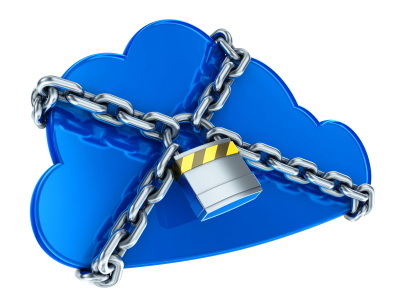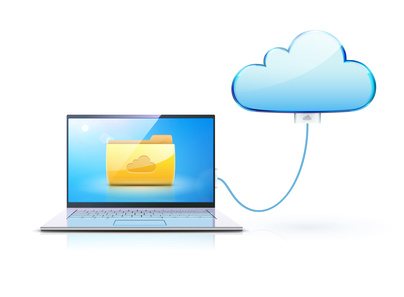Andy Brice Offering ISV Training Course
Andy Brice of Successful Software and PerfectTablePlan is offering a course for ISV’ers over the weekend of Nov 23-24, 2013. I don’t normally post endorsements like this on my blog here but Andy is a great guy and I know his course will be very excellent. What’s really good is that he’s limiting the classroom size to only 10 people for the session so that he can give the attendees more individual attention and focus. It’s much better than a larger session with dozens of people, you’ll be able to meet and talk to Andy directly. His experiences and success as an ISV’er is very valuable.
It will be held in Alexandra House which is located in Swindon, England. I understand that this will most likely make it more difficult for most of my readers as the majority are located in North America, but for those of you over on the across the pond, I do recommend it.
The course is for ISV’ers, so if you don’t know what ISV means then it’s probably not for you. However if you’re familiar with the term then you really should attend it. It includes 2 days of classes. He includes lunches and snacks, parking, wifi, etc. And best of all he includes a 1 hour follow-up phone consultation per student. For me personally the last part, the phone consultation, is probably the most valuable part of the course. Andy really knows his stuff when it comes to everything ISV related, so I strongly recommend anyone taking the course to absolutely take advantage of the follow-up call. I have no doubt it will be worthwhile.
I’ve known Andy for some years and I can tell you he really knows his stuff. I don’t normally do recommendations here, but I know Andy will do an amazing job of the course so I’m making an exception today and recommending his course. For example although I founded LandlordMax over 10 years ago and know Adwords very well (I even wrote an ebook that is almost a third about Adwords) yet I still engaged Andy for assistance in our Adwords campaign because I trusted his knowledge (and we’re no lightweights when it comes to Adwords). I reached out to him, not the other way around. I’ve also interviewed Andy in 2008 for my book called Blog Blazers to which you can read Andy’s interview here. Basically I can tell you he knows what it takes to be a successful entrepreneur successful.
One last comment, I’ve noticed a lot of programmers/developers out there who think that starting a software company is mainly about programming, but it’s not. In most cases, more of your time is spent in other activities outside of programming. You need to understand about a lot of other things for a business to succeed. A great programmer does not make a successful business. Probably the most under appreciated aspect of business by programmers is the value of marketing and advertising. It’s very important! Along with a number of other business related items most programmers tend to ignore, it can make the difference between success and failure. And this is one of the reasons I think a course like Andy’s will be so worthwhile to ISV’ers. Andy is going to show important tools that are needed for success that go beyond just programming!
You can find the details and information for the course here. Enjoy!
Permalink to this article Discussions (0)
LandlordMax 2012-2013 Fiscal Year – 10 Year Anniversary And a 10th Record Year!
It’s that time of year again. Our fiscal year just closed and like I’ve done every year, at least for the past 6 years (since 2007), I’m posting our sales revenues graph and highlighting some of our achievements over the year. And like every year before, with no exception, this year we achieved another record fiscal year!!
But before I begin, here is the link to all the previous years posts:
- LandlordMax 2011 – Another Record Fiscal Year!
- LandlordMax 2010 Best Fiscal Year Yet!
- A Year in Retrospect
- LandlordMax Revenues Update
- Status Update
- LandlordMax Sales Revenues
- LandlordMax Sales Revenues
First things first, this is our 10th year anniversary!! It’s amazing to think we’ve been in business for 10 years already. That’s a long time in the software world. So firstly I will self-congratulation LandlordMax for its 10th year anniversary.
Getting back to the post, to all those naysays that say desktop software is dead, it’s very well and alive!! In some categories owning the software and your data is much better than using a web based hosted subscription service. It can actually significantly lower your risks and costs compared to a hosted subscription service. Yes I’ve talked about this a number of times, but for those who are new, when it comes to the critical data of your business, where losing the data is not an option, hosted services can come with very high unexpected risks as I’ve outlined in this previous article. There’s also a new article that just just came out titled The Unprofitable SaaS Business Model Trap which I recommend reading that explains why we see so many hosted services come and go. So although SaaS have pros most people kinda forget there’s one very very very big con that comes with them until after it’s too late to do anything.
And now onto our achievements. This year our biggest achievement has been the release of the all new LandlordMax Network Editions of the software! In addition to these Editions, we’ve also added some new features to the Desktop Edition to match the new Network Edition (which is included as a free upgrade for existing users of the 6.05 Desktop version). The release of the Network Editions has been our biggest ever in terms of effort and scale. We’re very excited by it and we’re already seeing a very noticeable impact. It’s only been a little over two months and we can already tell that next fiscal year is going to be exciting.
Above the software of course we’ve also had to implement a whole slew of other items. For example the website purchasing system has gone through some major changes and improvements to support the new Editions. The user manual has been updated. Basically everything that goes along with such a major launch has also happened along with the release itself.
Beyond that, and I hate to admit this, we didn’t execute many new additional marketing initiatives this fiscal year. Most of our efforts went into getting the Network Editions released. This was a big effort. I know I’ve said it before that a lot of work went into it, but a LOT of work did go into it. As a result a lot of our other initiatives were put on hold as we re-allocated efforts to the release of the Network Editions. For example marketing projects were transitioned to release efforts. You may also have noticed that I didn’t publish any posts here for almost 6 months, this is why. It was an all hands on effort to get the Network Editions released. No one was spared. So our marketing efforts stayed pretty consistent with the previous fiscal years (neither up or down).
And on that note I do want to take a minute to thank everyone who helped us release the Network Editions. Above those who worked beyond their job roles and descriptions, we also had a lot of people who volunteered their time to help us in our testing efforts. To all these people I personally thank you very much.
Since the release of the Network Editions our main efforts have focused back into the next major “feature” release of LandlordMax. That is we hope to release a major new version of LandlordMax Property Management Software before the end of the year, possibly within as little as a few months. It will include many new features and lots of new functionality. Not only features, but we’re streamlining a lot of the processes within the software so that many actions will be even easier and quicker to process. Basically more automation in your regular tasks along with new features and functionality.
For example, and this is still unofficial because as a rule we do not officially state anything until it’s fully completed to avoid any vaporware statements, we’re working towards offering a built-in word processor with the next major version, which will potentially include “templating”. The major benefit of this feature is that you can import your legal documents into the software as “template documents” from existing Word documents. From there, you can say go to a tenant, create a new lease agreement, and the software will grab your templated lease agreement from the templates, fill in the tenant’s information, and then save the new lease document under the tenant, allowing you to print it, export it, and so on. This is really beneficial in that it lets you manage all your documents with your data, from tenants, property owners (for property managers), etc., all within the software.
And this is just one of the features we’re looking to implement for the new version. There’s a lot more where that came from!!
In addition to the new release, we’re also planning to really ramp up our marketing efforts this fiscal year. Like I just said a few moments ago, our marketing efforts did not increase much during 2012-2013. Yes we’re still marketing at the same levels as the previous year, but we didn’t really grow our efforts with new initiatives. Which on a positive note says a lot about our revenue growth in the last fiscal year. People like the software. We know there’s a significant amount of word of mouth promotion going on from our loyal customers. People recommend LandlordMax to other people. And that’s where most of our growth for the last year has mostly come from. So one of our big goals this fiscal year is to really improve our marketing efforts beyond what we’ve done in the past. In two years we’ve doubled our revenues, it would be nice to be able to double them again but in just one year this time.
And on that note, I really look forward to 2013-2014. There’s absolutely no doubt we’re going to have another record year. We’ve just launched 3 new Network Editions. We’re on the edge of releasing a new major feature release. And we’re planning on significantly improving our marketing efforts. And we’re already seeing an upswing from the new Network Editions in just a couple short months. Fiscal 2013-2014 is going to be exciting.
After 10 years I continue to be excited by our progress and how love there is for LandlordMax. Here’s a sample of some of the new testimonials we received just last month (July 2013):
“I have been using LandlordMAX for a little over 18 months. Not only was the program easy to setup but has made tracking of expenses, late payments, etc. much easier. With quite a number of apartments on our books it was always difficult to see when payments were not made. The year end accounting has been a dream. My accountant no longer needs to go through our books to get the EOY numbers. Also I wanted to add that customer support has been terrific. And best of all when I have reasonable suggestions for improvement of the program they are made within weeks.” – Murray Acheson
“I have been looking for a program for the past couple of months and was getting very weary and discouraged. Especially for a ‘smaller’ complex, such as ours. It seems the market for automated recordkeeping has gone to mostly online with monthly cost, which is probably great for large complexes but not economical for us small operations. I have been relieved to find your program and the great support from you as I learn the program.” – Ann Noel
“Love the program!! JERRY” – Jerry Carr
“Knowing that I have Help/Support for the future is like having insurance on your car.” – Gil Rheaume
“And again – thank you for the absolutely amazing customer service and product support” – Doug Doody
“Once again, thank you for the outstanding customer support. It’s incredible easy to use. Using it is very intuitive. When I run into a problem or have a question, I can always count on FAQ, discussion forum, screenshots and an outstanding customer support to solve my problem and/or answer my questions.” – Christine Chan
I also want to include one of my personal favorites we received just the month before:
“I’ve been using your software since 2007. I was one of the ones that started asking about a network version long ago. Even on its first release, your network Landlordmax software is awesome! It does EXACTLEY what I was hoping for. I’m a tech geek, and I’ve been willing to pay any amount for good property management software for my brokerage. I’ve tried every other competitive solution (all of which charge substantially more), even the big name networked versions, which charge outrageous monthly fees. Yours outperforms them all. Really brilliant software. You did great Steph. You’ve really helped my brokerage succeed as it rapidly expands. My employees all love it too, and it save’s me a king’s ransom in training cost for new employees do to its simplicity.” – Ed Dimarco
Permalink to this article Discussions (0)
Blog Blazer Fridays
Like I said I will start posting an interview a week from the book I published called Blog Blazers (seen above). However I decided to first have an introductory post today to give you a list of the bloggers that were interviewed (in alphabetical order as they are presented in the book). As well I thought it would be good form to add a link back to the introduction on every post for people who join later on as way for them to quickly catch up. This way they can have a starting point.
First the details for anyone interested in purchasing the printed book, you can buy it on Amazon here as well as a digital copy from the website here. The main difference is that you can click on the links in the digital book where as the printed book you have to type them in. Other than that the printed book and digital books are identical. In any case, I will be publishing all the interviews here so you can also just read them here and click on the links here. The printed book is really more for people like myself who prefer printed books, or the digital book for people who want everything together in one nice file for their iPad, Nexus, Kindle, and so on. Also please note that you can also subscribe to receive emails of the interviews by entering your email in the form in the top right corner or entering your email in the form on this page.
That being said, the book was published about 5 years ago, back in 2008. So over time some things have changed, but the interview questions were intentionally selected to be as timeless as was possible and while making it interesting and offering the reader a lot of actionable items. I also tried to ask everyone the same interview questions so that the book would make it easy to study how different people succeeding at blogging. You want to know the secret to blogging success, there is NO ONE SECRET! Different bloggers succeeded in very different ways. The biggest hurdles to blogging success are number one starting and number two stopping. There is no one single way to succeed or a single secret recipe for success. Different bloggers have succeeding in different ways using different techniques.
Back to the book, and before I go ahead and list the bloggers interview, if anyone wants to peek ahead and read the individual blogger’s bios, you can read their bios here. Warning of shameless plug: Also if you’re interested, you can find the reviews about the book here.
Now, as I was about to say before, deciding who to include in the book was very very hard. I wanted to not only include successful bloggers, but also up and coming bloggers, bloggers that weren’t mainstream yet. I wanted to include bloggers for different subjects and niches. There seems to be more technology related blogs than other niches. I also tried to include bloggers that I believed would be around for some time, at least 5-10 years. When it comes to blogging, most people are notorious for only blogging a short time, from a few months to maybe a year, so I wanted to avoid bloggers that were going to be gone shortly.
So without further ado, here is the list of bloggers interviewed in alphabetical order:
- Aaron Wall of SEOBook
- Abdylas Tynyshov of AdesBlog.com
- Al Carlton of Coolest Gadgets
- Alex Papadimoulis of The Daily WTF
- Andy Brice of Successful Software
- Anita Campbell of Small Business Trends
- Asha Dornfest of Parent Hacks
- Ben Casnocha of The Startup of You
- Benjamin Yoskovitz of Instigator Blog
- Bob Walsh of 47 Hats
- Dan Lyons of The Secret Diary of Steve Jobs
- Dane Carlso of Business Opportunities Weblog
- David Armano of Logic + Emotion
- David Seah of DavidSeah.com
- Dekek Semmler of Derek Semmler
- Dharmesh Shah of On Startups
- Erik Sink of Eric.Weblog()
- Ian Landsman of Ian Landsman
- James and Alex Turnbull of Google Sightings
- JD Roth of Get Rich Slowly
- Jeff Atwood of Coding Horror
- Jeff Clavier of Jeff Clavier’s Software Only
- Jennette Fulda of Pasta Queen
- Jennifer Perry of 101 Reasons I Hate Being Fat
- Jessamyn West of Librarian.net
- Joel Cheesman of Cheezhead
- Jonathan Snook of Snook.ca
- Manolo Blahnik of Manolo’s Shoe Blog
- Neil Patel of Quick Sprout
- Pamela Slim of Escape from Cubicle Nation
- Patrick McKenzie of Kalzumeus
- Penelop Trunk of Brazen Careerist
- Ramit Sethi of I Will Teach You To Be Rich
- Rob Walling of Software by Rob
- Rohit Bhargava from Influential Marketing Blog
- Seth Godin of Seth’s Blog
- Stephane Grenier (me) of FollowSteph
- Steve Rubel of Micro Persuasion
- Trent Hamm of The Simple Dollar
- Yaro Starak of Entrepreneur’s Journey
As you can see the list of bloggers interviewed is quite large and substantial. At the time some were just starting out and have now reached new heights of success!
I’ll be posting an interview a week for almost a year, for 40 weeks in all! It will be called Blog Blazer Friday.
Thankfully the vast majority of the bloggers I invited to be interviewed in the book have lasted the test of time, at least in blogging time (5-10 years). Almost all of the blogs are still alive, all but just 2 blogs!! The ones without the links are the two that are no longer online. A few more do have their blogs online but aren’t actively posting anymore. But overall the vast majority are still very active bloggers and have only grown more since the book was published! Overall I have to admit I’m pretty happy with the results 5 years later.
There’s definitely a lot of good information and details in the interviews and I hope you enjoy reading as much as I enjoyed compiling them.
Permalink to this article Discussions (1)
The Move to Aweber From Feedburner is Completed
As most of you realize, about two weeks ago I made the hard decision to move the email subscription list for this blog from Feedburner over to Aweber. I basically had come to the realization that Feedburner is coming to an end sooner than later, most likely sometime later this year to at most sometime next year. The signs are pretty obvious in my opinion. So as a result, rather than continue to build up the email subscriptions only to lose them later, I decided to take the hit and move to Aweber now.
I knew it was going to painful and I would lose many subscribers over in the transition based on what I read from many other bloggers. It was pretty clear the subscription count would drop significantly. There was no if, the only question was by how much?
Firstly, and this is the hardest to swallow, everyone you import over to Aweber basically has to re-subscribe (re-opt in but it’s really the same thing). To prevent spam, and thus to prevent people from importing random email addresses and email lists and causing harm to their service, Aweber require that every single person you import re-opt in. That is they will send out an email saying that if you wish to continue receiving emails, you have to once again click on the link to confirm your subscription. Not a big deal, but this does require an action from all your subscribers.
The problem here is twofold. Firstly many people are afraid of clicking on links they receive. When it comes to subscribing, they usually get it within a minute or so, so it’s very fresh in their minds. It’s an expected email and they’re ready to respond. However when it comes out of the blue, even if you announce it in a previous communication, it’s still not as expected, so a lot of people will be reluctant and just not click. It’s unfortunate but that’s reality.
Also, and this is again another reality of our world today, asking people to perform any additional steps is enough to lose a certain percentage. Yes they may still be interested in your articles, but any additional work will cause a drop of some people. Just like adding an extra field in your purchase is likely to lower your sales conversions, asking to re-opt in will unfortunately drop some people.
And of course, and this is probably a good thing, over time some email addresses will no longer be valid. For example I still had many hotmail.com email addresses which Microsoft have since converted over to outlook.com. So for some people they may just have re-subscribed with another email address. Others just missed the opportunity. Similarly others may have used their work email address and are no longer employed at the same place so the email address is still in the list but is no longer active. Basically a bunch of little reasons for why some subscribers are no longer valid. So all list naturally need some pruning over time. It’s just psychologically tougher to do at the same time as everything else even if you know why.
With that in mind, the last blog post I wrote here was to let people know what I was doing, so that they weren’t as big a surprise when they received the email to re-opt in. Basically a friendly notice. And since then I decided to wait at least a week to give as many people as possible a chance to re-opt in before posting again so they wouldn’t miss anything. So yes although I was planning on writing more often, I held back to give the transition a little bit of additional time.
So what was the end result? Well firstly I’m happy and relieved it’s done. I’ve been wanting to do this for at least the last 2-3 years. I don’t know why I held off so long, probably it just didn’t seem as important. That and I didn’t want to lose any subscribers along the way. In any case it’s now done and as a result I can breathe more freely. And most importantly I can feel more comfortable that any efforts I spend on growing the list are not going to be lost in the future.
And now for some metrics. Well right off the bat 26.6% of the emails bounced when sending out the re-opt in email. So yes although that stung, that’s actually a good thing. It’s the pruning I just talked about. S4o basically 26.6% of the email subscribers over the years are no longer active. So this is a good purge. No point in sending out emails to people whose email addresses are no longer valid.
After that, in terms of re-opt ins, well let’s just say that quite a good number of subscribers were lost. I expected it, and it was definitely within the norm from what I read online from other bloggers who did the same thing. Everywhere you read about it, people say do it sooner than later because the cost of transitioning is painful. After this experience I completely agree. Do it sooner than later. It’s not fun so if you’re going to do it, do it sooner rather than later. It’s better to keep the number of lost subscribers in absolute numbers lower because the percentage will most likely be about the same. In other say losing 10% of 10 is much better than losing 10% of 1 billion in absolute numbers. That being said, I’m finding a week later previous subscribers are still in the process of re-opting in, so I don’t yet know what the final percentages will be.
On a positive note I’ve absorbed the cost so that’s now done. And although I lost some subscribers, quite a lot did transition over which is great! Above that, all the RSS feed subscribers are still there, they haven’t changed in numbers at all according to Feedburner (I left Feedburner for the RSS feed for now since there’s no reason not to – there’s no penalty if they go away and I transition that later).
What’s also good is that I already have quite a large blog with almost 500 posts written over 8 years so that will definitely help me re-grow it back to the same level of subscribers pretty quickly. My guess is that I’ll be back to this same levels within 3-6 months, so that’s about the cost for moving if you’re curious. Which like I said before, if you research it, that’s actually pretty good.
I believe this is also the very first time ever that FollowSteph has had less email newsletter subscribers than my company LandlordMax Property Management Software email newsletter! By the way the company email newsletter is also managed by Aweber and has been for at least a year now. In any case I don’t expect that to last very long, usually blogs get more subscribers than company newsletters, regardless of how good they are. What’s nice though is to see both of them growing on a daily basis!!
And on that note, I welcome back everyone who has transitioned! I also look forward to posting quite a lot starting now. And later this week, I will start to post one interview a week from my book Blog Blazers which you can find on Amazon here. The list of bloggers I interviewed can be found here (and I will be posting in the order of the book). So it should be quite a lot of fun. There’s lots of great interviews in the book.
Until then, here’s goes to the first post using Aweber!
Permalink to this article Discussions (0)
Moving Email Newsletter to Aweber From Feedburner
Today’s post is more for the people who follow this blog by email, those who have subscribed to the email newsletter to receive emails of the posts. Basically the recent closing of Google Reader has made me realize I can’t hold off moving away from Feedburner any longer. It’s pretty clear that Feedburner is on it’s last leg and that Google will drop it shortly. Another example of some of the risks of hosted services.
In any case, as a result I’ve decide to transition over to Aweber (affiliate link). I’m going to import the email list into Aweber, but the downside is that Aweber requires that everyone re-opt in to get the email newsletter. In other words they will not send you any new blog posts by email unless you confirm your subscription. They do this as a policy to prevent spam on their system. Otherwise anyone could just import any list of emails they wanted and Aweber’s email service quality would go down. The downside is that you’re almost guaranteed to lose some subscribers along the way, and as unfortunate as that is, I don’t think I have a choice.
Therefore please accept my apologies for this inconvenience, and please do go ahead and re-opt your email newsletter subscription when you receive the invite. I look forward to continuing to post many articles in the future. Also starting next week I plan to post one chapter of my book Blog Blazers each week (an interview a week). You can find the list of people interviewed for the book here. If you can’t wait, or you want a hard copy, you can order the book on Amazon here.
In any case, I do appreciate your patience, help, and understanding in transitionning to Aweber. And if you have any questions or comments please don’t hesitate to contact me. In the meantime expect to see an invitation email to the new email newsletter service later this week.
And thank you for following FollowSteph.com!!
Permalink to this article Discussions (2)
Google Reader Alternatives – Not Everything Should Be Hosted
First let me preface this article by saying that although I believe SaaS, cloud services, and hosted services can be very good and wise decisions in some situations, in others they can also be very terrible options.
Not to rehash the past, but I wrote a previous post called What are the Risks of Cloud Services? I explain when it’s good to use hosted services and when it isn’t. They have a time and place, and running core and critical business functionality and data is generally a bad place to use cloud services. I won’t go into the same arguments again, I’ll just recommend you read the article if you haven’t already.
That being said, many people are about to be cut off from Google Reader at the end of the month. There’s only a few days more before their Google Reader service goes away for good. Luckily they gave us a month’s notice, but you can’t always expect this from every company. Additionally we’re very lucky that for most people this is a convenience rather than a critical service. Unlike say the core data for a property management company were you store your accounting, leases, tenants, late rents, etc., Google Reader is mainly just a place where you manage a large the reading of a large number of websites in a convenient and easy way. I personally use it and loved the service. I used it every day. I will definitely miss it.
The problem with a hosted service is that they decide when you can no longer use the service. NOT YOU!! It could be tomorrow, or in the case of Google they can give you a grace period to do what you need to. And in this case, we’re actually even more lucky in that Google offers the ability to backup the data. The big problem however is what do you do with the backed up data? It’s not an industry standard. Generally there is no way to backup the data, and in most cases you have no warning at all.
So what’s happened in the last while is that a bunch of people are trying to create products and services to fill in the void created by Google Readers dismisal. But before continuing, you should be congnicent that if it wasn’t such a big service from a big company, most likely the users of Google Reader would be out of luck with no alternatives. The norm for online services is that you lose everything when the service closes and you normally have no warning. It’s very very common! Just this month alone I personally read (who knows how many I didn’t see) about at least a dozen web services that have closed down on Hacker News which is a place where you can find a lot of interesting news from the Startup community.
One of the more poignants one that recently caught my attention and pretty much inspired this post was called My Startup Has 30 Days to Live. You can read the discussion from Hacker News here. Specifically one comment from patio11 drew my attention, also known as Patrick Mckenzie, where above suggesting they stop taking money unless it’s absolutely necessary to pay employees, he also said:
“It sucks. It will be better, very soon. You don’t have to be scared: this is routine and, while it doesn’t feel like it, you’re actually in very good position, both absolutely and relative to many other people.”
The key comment being “it’s routine”. That this is common. Many online companies close. The problem is that we haven’t experienced it as users enough yet. Much like most people don’t really realize computers and especially harddrives do fail, and quite often. I know more than a few people who have lost all their pictures and videos because they assumed computers just always worked and didn’t need to do any backups. Until digital cameras really became mainstream, most people didn’t really feel the pain when their computers failed because most of the data wasn’t as critical, or shall we say important to them. It’s different now, so people are going through an education process and are learning that you need to backup your data, that computers do fail and it can be very painful.
And with that in mind, I was quite surprised, well ok I wasn’t surprised by it but rather surprised that we’re still repeating the same mistakes when I read the following comment about one of the latest Google Reader replacement options called Sismics Reader which is a software you own and manage on your computer (I have not tried their software so I cannot say if they are good or not):
“This looks pretty promising. Judging from the demo, they have the UI close enough. They need to offer it as a service, though. I like that I have the freedom to run my own server, but I really don’t want to have to bother in practice.”
Basically you want to use a hosted services to replaced the hosted service that was just closed down and for which you’re now trying to scramble to find an alternative solution, because you were lucky enough to be able to backup your data, even if you have no place to restore it to yet.
Cloud and online services can be good in some situations, but we still have to learn that they have a place and time, and that time and place is NOT always!! We internally for LandlordMax use cloud and hosted services for a number of things including email delivery, email newsletter management, version control, and so on. But each of these systems can either be replaced within minutes to a day, or use a standard data structure where the data can also be pushed to another service right away. For example we use Subversion which is one of several industry standard systems for managing programming code. We do regular backups, and if our host goes away, we can move to another service within minutes. In fact we could host it internally on our own computers but we don’t for reasons that are more beneficial for us specifically. The key is that we’re not locked to the success of another company. Losing our programming code overnight would be catastrophic for us, so it’s critical that this data never be locked out. We need to make sure we have regular backups and alternatives should something happen.
With all that in mind I’m personally more interested in a Google Reader replacement that I can own and manage myself. There are just too many startups right now clamoring for Google’s fallout, and I suspect a LOT of them will be gone within the next year or two. And at that point, it’s right back to the very same situation as today. And the next time we may not be able to transfer the data to another solution. I don’t expect these new solutions will support each other’s data formats, assuming you can even export any data at all. At least with a software solution you own and manage you can continue using the software for as long as you need or want. If the company closes, discontinues the software, etc., you can still continue using the software for as long as you want. A small difference with a very big implication!
Online and cloud based solutions can be good, just be careful not to assume they are always good because this is not always the case. And if you haven’t already read my article about the risks and when it’s good and when it’s not good to use a hosted service, then I suggest you do so sooner than later.
And hopefully a good Google Reader alternative will appear soon. From what I’ve seen there hasn’t yet been a good solution to transition to yet. Every comment and suggestion I’ve seen so far about Google Reader alternatives has been about making due with what they have. There’s been no obvious goto solution yet. Right now it’s still really about just good enough until someone releases something worthwhile.
PS: In all this we never even mentioned issues such as what happens if you get locked out of your service. What if for example Google decided one day to lock you out of your Gmail account? What if your credit card failed and you didn’t notice until after they closed your account and deleted all your data? Just a few other things to look out for…
Permalink to this article Discussions (0)
Lines of Code Revisited Again
Again, just like last time, I completely agree that Lines of Code (LOC) is not an ideal metric to measure the scale of a system because of all the varying factors. However this is all I have so I’m going to do the best I can with what I have.
As many of you already we’re hard at work on a networked and multi-user version of LandlordMax to which you can see the daily status update here. It will be released as a minor update, that is a letter increment rather than a full version number increment. The main reason for this is to assist people in moving up to the networked version with the lease friction and costs possible.
In any case, I thought I would share with you today the scale of this effort. Yes again I do realize LOC is not the best metric, but it’s really the only metric I have which can show the scale of the effort. As you’ll see, the amount of new programming code included between each version is fairly close. This is NOT intentional by any means, and I hadn’t realized it until I generated this chart today, it just happened that way. Anyways as you’ll quickly see, the difference in LOC between the last version, version 6.05d, and the upcoming version 6.05e is about the same as a full version number release!
Of course a lot of that effort is specific to the networked offering and the as such the desktop offering will only get some of the benefits, but regardless it’s still a major effort.
All that to say the upcoming networked version 6.05e is a major undertaking, probably more than most people realize. Offering networking capabilities along with multi-user support is definitely a lot more complex than just letting multiple users connect to the same database, especially when you’re dealing with complex data that many of the users connected to the same system at the same time will be sharing and modify on a regular basis. You have to deal with a lot of synchronization issues, especially when it comes to modifying and saving existing data which I won’t get into today.
And if anyone has any suggestions on other interesting metrics I can fairly easily, please let me know. I’m always interested in learning more about our system.
Permalink to this article Discussions (1)
What are the Risks of Cloud Services?
Through my company LandlordMax I hear lots of people asking if we have a cloud offering (in case you’re wondering, we don’t yet). The thing is that most people ONLY look at the benefits, very few look at the potential and catastrophic issues that you’re at risk of. For LandlordMax we use several online (cloud’ish) solutions, and it’s great for many things. The problem is that you also have to be careful because for some things the downside can be catastrophic! Even possibly terminal to your business! It can be much bigger than you realize and I’ll explain why in just a bit.
First, let’s make sure we’re on the same page about what cloud offerings really are. So what exactly is a cloud offering? Most people today have come to define a cloud service as a service that’s hosted online. Although not exactly right, it’s pretty close. And for the purpose of this post we’re going to define cloud services as all online services. In most cases these are just going to be websites that offer services. Again, although not technically correct, it’s close enough for today. And anyways this is what most people understand cloud services to be.
If you’re interested in the exact details, Wikipedia has a nice article about cloud computing. As well you’ll probably want to check out their article about SaaS (Software as a Service), which is actually closer to what people really mean when they say cloud services.
In any case, let’s start with the benefits, so we can understand why people are so interested in these solutions (including myself):
Benefits:
- Affordable: You don’t have to invest in any infrastructure, computers, etc., it’s all taken care of for you and amortized over time.
- Automation and Maintenance: You don’t have to manage any computers, servers, upgrades, etc. It’s all taken care of for you.
- Mobility: You can generally access the service anywhere there is an internet connection.
- Focus on core competencies: Instead of spending time setting up your infrastructure, computers, etc. you now have the time to spend on where your real value is.
- Scalability: Most online solutions will offer a significant amount of growth. You just move up plans. Amazon’s EC2 service recently had an amazing example where a system scaled up to 50,000 CPU cores within 3 hours.
- Easier: If you don’t have to set up anything. You don’t have to figure out how it works. It’s all done for you.
- Vendors are more experienced: In most cases, the service you’re using is the vendors bread and butter, they work in these systems all day, so they know their stuff in and out whereas for you it’s just to get the job done.
- Quicker: You can generally sign up and start using the solution within minutes. If you have to set it up, it can take days, weeks, or more.
- Less commitment: Maybe you only need the service for a month, half a year, etc., which means you can save from having to invest in a ton of infrastructure for a short lifespan.
As you can see, all of these are great benefits. Who wouldn’t want them? Especially for a smaller company, the benefits are incredible.
Of course, like everything else in life, you can’t have everything. Cloud services do come with costs. Not so much in terms of dollar costs, but in terms of very huge potential UNSEEN RISKS. This is especially true if you have to store data!
There are a few other cons, such as you can’t access your data without an internet connection, and so on. But really there’s really just one very big con, and unfortunately it’s generally unseen until it happens. That’s the worse kind of con! What’s worse is that most people don’t really talk about them, mostly because cloud services are still fairly new enough that most people haven’t really had a chance to experience this very big and potentially catastrophic con.
But before I explain it, let me give you an analogy that’s probably closer to home, and that you’re likely to have already encountered.
Most people store their pictures on their personal computer hardrives. Hardrives do fail. Google published a groundbreaking research report and the results were quite troubling. Basically you can expect drives to fail at a pretty predictable rate. And unfortunately it’s not just hardware failures that you have to deal with, all kinds of things can happen such as a virus corrupting your system, power surges, and so on.
In any case, before there were digital cameras, most people really didn’t have that much data, so all their really important data could usually be backed up on a CD or DVD (or if you’re old enough to remember this, floppy disks or tapes). It sucked to lose your saved video game files, or to have to install your applications again, but you usually could. Sure you’d lose some data, but usually it wasn’t that critical. Most important was generally backed up on floppies, CD’s, etc. because it was quick and simple.
Nowadays with everyone having a digital camera, there’s lots and lots and lots and lots and lots of pictures saved on people’s computers. Pictures they really don’t want to lose. The data is now much larger and generally more valuable. There’s so much data these days that in many cases you can no longer just back it up on a CD or DVD. But even at that, because of the quantity of data, most people just simply don’t do any backups at all, they expect their computers will just continue working. And computers usually just work until one fine day where it eventually fails and everything is lost. It’s terrible and catastrophic. Years of pictures lost in an instance!! It’s devastating. Yes there’s other data, but for a lot of people, their pictures are their most important data.
And so as cameras have become more common, we’ve started to experience more the pain of computer failures. And as such, it’s now much more common for the average person to have an external hardrive to backup their data. 5 years ago almost no one did this. Although not everyone still does this, it’s much more common. And its definitely going to be that much more common with time. We’re learning from our experiences. Once you experience it you vow never to let it happen again. It always takes that first time to wake people up, myself included.
I’ve been backing up prolifically since as long as I can remember because I’m one of the lucky ones to have experienced my first computer failures eons ago. And in 2006 I even wrote a post called 4 Simple Steps to Protect Your Data From 99.9999% of all Computer Failures which is still as true today as it was back then. I still mostly adhere to these steps, with the exception that I do even more today than I did back then
So why did I go on such a tangent with digital cameras and data backups, because when you use a cloud service to manage your data you’re basically exposing yourself to exact same risks!! You might not realize it, but with most online services you’re basically running without a net. There’s no backups. If anything happens, it’s the same as a computer failure with your digital pictures. And if the data is critical to your business, it could be catastrophic. What’s worse of all, there’s often no warning at all before it happens.
So let’s get into this con in much detail.
Cons:
For the cloud services you use right now, do you have a backup that you can use if they close down or you decide you want to move elsewhere? In most cases you have no way to extract your data at all, nevermind moving to another service. In those situations that you do, can you actually take that data file and use it anywhere else? Maybe in theory yes, but can you really in practice? If you can’t, then you might as well not have any backups at all. Why fool yourself into feeling more secure when you really aren’t. And this question leads us to some very interesting and provocative questions.
What happens if the company closes or decides to no longer offer their cloud service? All I can really say is good luck with that! Imagine for a moment that you have a contact management system and you have tens of thousands of contacts stored, with all their interactions, etc. The company that hosts the cloud services suddenly closes. What happens the day after the company closes? If it’s a service, the service is shutdown immediately. You’ve just lost all access to the system and your data overnight. Ouch!!
Online services that manage and store data have a lot of additional and very high risks. The scenario I just described is the same as if your hardrive just crashed and you just lost all your pictures and documents without any backups. However in this case, maybe your business relies on the data and system. It sucks to lose your pictures, but you can and will survive. Can your business survive? What is the impact on your business?
If it’s just a backup service of your data files, then it’s not a big deal, you can just re-create the backups with another service. Sure in the meantime you have no backups, but it’s quickly resolved. However if it’s all your customer and vendor contact information, communication histories, contract negotiations, etc., then the impact is going to be huge. What if you were using an online property management software system to manage hundreds or thousands of units and tenants and suddenly you have no access to anything. The impact could be severe enough to cause you to go bankrupt (you may not be able to properly collect your rents on time to pay all your bills, or even know what all your bills are)! That’s a huge risk. A risk that’s so large that it overshadows all the possible benefits!!
Which leads me to my next question, how much warning do you think you’ll get if the company hosting the cloud service closes? I can’t imagine a company that’s managing contacts, emails, projects, etc. publicizing that they’re on the brink of closing. Most likely you’ll have absolutely no warning. One day everything will be fine and the next day the system is down never to come back up. And to be quite honest, I don’t know that there’s much you can do to prepare for this anyways, even if they gave you a warning. How are you going to extract your data? What are you going to do with that data?
Following this, what happens if the service you’re using significantly changes it’s pricing model? It’s not uncommon for an online service to adjust their prices, there are many stories of significant increases in prices. Especially for newer companies, which most cloud based services are. Or better yet, what happens if the company gets acquired? Will the pricing models change? Other than paying what they want to charge you, what option do you have? Sure you can move, but can you really? What is the cost of transitioning?
And what will happen to the could service when it gets brought into the new company as part of an acquisition? Will it stagnate? For example Mint was acquired by Intuit in 2009 and a year later the comments weren’t that great. What if the new company is a competitor? Will they force you to transition to their service or you lose all your data? One of our big competitors has been doing this with the competitors they acquire. They’re basically closing the solutions they acquired and are forcing everyone to move to their cloud based solution. Not everyone is happy about this. It’s yet another very big risk of using a cloud service?
Which leads me to my next big question. Do you trust this company over the lifetime of your own company’s needs? In other words, will they offer the same quality of service in 2-5 years? What about in 10 years? If transitioning is next to impossible, which it is for most online cloud services, then you’re at their mercy. They could never upgrade or improve the service, or worse it could become slow, buggy, etc. with time. What recourse do you have other than completely starting over?
With a solution you install and manage, you don’t ever have to upgrade if you don’t want to. In fact, the company has a very strong motivation to improve their software because they generally only get paid when a new version that has enough value to upgrade is released. If it’s not good enough, people just don’t upgrade. And with time, the value of upgrades becomes more and more significant. In other words, the company’s motivations are probably much more inline with yours when they aren’t cloud based. They need to convince you spend more money on them, that the value is worth it.
Conclusion
Unlike pictures where it would really suck to lose Johnny or Susie’s 1st birthday pictures, the impact to your losing your data could be so significant as to destroy your business. I’ve already given a couple of examples, and it’s pretty easy to come up with additional ones. Basically anywhere you store data that’s critical to your business is at high risk.
Therefore I would now recommend you look at what services you use and determine what the costs would be if they suddenly went down tomorrow. Is that cost worth the benefits? In some cases yes, absolutely, but in other cases no way would you ever even consider it if you had thought about it first.
The thing is that today most online services are still fairly new, and most really haven’t had the chance to close. Although cloud computing isn’t new, it’s really only been in the public’s attention for a short time. And as such very few people have experienced the downside. If I was to guess, I would suspect that most like you haven’t either.
I’ve personally only experienced it once, and it wasn’t with one of our core products, but even then it was pretty painful. I learned my lesson. Never again. And thankfully it wasn’t a service that’s core to my business. And because of that I’ve since been very careful with what online services my company uses.
Anything that can severely cripple us has to be done internally. It has to be installed and managed internally. This doesn’t protect us 100%, but what it does offer us is a buffer. If something happens we have some time if the company closes, collapses, changes, etc. We can at least still continue to use their software until we find an alternative solution, even they don’t exist anymore. We can’t use them indefinitely, but we do have some time to transition to another system. We might not be able to transition the data, but at least we can continue to access the old system if need be. And because we have some time, we can always hire someone to help us in moving data from one system to the other, even if it’s manual data entry. The key is that we at least have options. And most importantly that we’re not without our system overnight.
And with that, I will say that my company probably uses close to a dozen online cloud services. Am I a hypocrite? Am I willing to take those risks? Absolutely not. Each service we use would not cripple us if they closed tomorrow. It wouldn’t be fun if they went down, but it definitely wouldn’t be catastrophic either. There’s only one online service we use which I’m planning to push to an internally manage solution sometime this summer. It also wouldn’t be a catastrophic loss, but it would definitely be more painful than the others. It’s the only solution left with data that we’d need to extract that we wouldn’t be able to. However if we lost the data, it wouldn’t be catastrophic. It wouldn’t be pleasant either, but we could manage without too big a hiccup.
To give you an example of solutions we manage outside, internally we communicate using HipChat. Well at least until last month, before that we were using Campfire. Obviously we were able to transition because we’ve already done it. Losing either of these services overnight wouldn’t be fun, but neither would really slow us down much. They’re very useful and do increase our productivity internally, and losing the chat histories would have some costs because some info would have to be re-communicated, but as I’m sure you can appreciate, the exposure is pretty minimal compared to the costs and risks.
Another example is that we use Aweber to manage our company newsletter. Before I begin, let me just start by saying I chose them because of their reputation and my belief that they aren’t going anywhere anytime soon. In any case, if something happens, yes we’ll lose the latest email subscribers since our last local backup. That’s a cost, but really it’s not that big a deal. Yes we’ll lose our stats over time. They were nice, but we can live without them. The biggest pain would be importing the mailing list with a new service. Most likely all our subscribers would be emailed to confirm and verify they want to be subscribed to the new service managing the newsletter. So as part of this effort, we’ll probably lose a percentage of our subscribers. It’s not pleasant, but by no means is this catastrophic. We can definitely recover.
If however I was a real estate investor, or a property management company managing properties for others, losing all my data could be extremely catastrophic. All of sudden I no longer know which tenants owe me what amount of money (rents, back rents, damages, late fees, etc.). I now have to find all the signed lease agreements and go through that manually just to calculate this month’s rent roll. If I have 300-500 tenants, I might not be able to process all that information in time (I might have 5000 tenants on file but only 500 are currently active). What about all the workorders I have on file, all that information goes away. In some cases a request to fix a leaky sink can just be re-requested by the tenant, but what if a workorder is critical and it gets lost (for example a vacant unit needs a roof repair otherwise it will collapse, a leak that goes unchecked escalates, etc.). If I’m a property management company, I might have obligations on when I need to pay the property owners their rental revenues so they can meet their mortgage obligations, but if all my information is gone, I might not have the time to manually process everything. And when I do find a new system, in this example I now have to enter 500 units worth of data, 500 tenants contact info, 500 leases, etc. How long will that take? I might not be able to survive the 1-3 months it takes me to recover from my online cloud service disappearing on me overnight.
Using an online solution in the above example could be very catastrophic. In this case the risks just aren’t worth the benefits. In this case you’d most likely want to acquire a system which you can manage internally, so that if the software company closes, decides to stop selling the software, gets acquired, changes prices, etc., you can still continue using their software until you find a proper replacement. Otherwise you could come in to the office one day to find yourself in a world of hurt.
Online and cloud services can be very beneficial. They definitely have their merits. We use many such cloud services here within LandlordMax. However you always have to be vigilant in terms of what and how you use them. They really only have one con, bit it’s a whopper of a con! Which is that your data is at their mercy. You generally don’t have backups or anyway of transferring it. So always, and I mean always, make sure that a permanent disruption of the cloud service you’re looking to use isn’t going to destroy you. And if you’re already using it, then you should already start to make preparation plans just in case the worse does happen. Don’t wait until it’s too late because by then it will be too late!
Permalink to this article Discussions (6)
LandlordMax 2010 Best Fiscal Year Yet!
As many of you have probably noticed, I haven’t posting nearly as often as I used to on my blog this year. The reason is that I’ve just been way too busy with my company LandlordMax, and with good reason. We just closed up our last fiscal year with an increase in revenue of about 40% over the previous fiscal year! Not only that, but in regards to our calendar year, we’ve already beaten our complete revenues for last year, and it’s still just the summer. Which means that our next fiscal year will be even better. Right now we’re looking at a 100% growth in revenues over last year assuming no further growth for the remainder of the year.
What’s really cool is that this is all happening in a recession, with the real estate market being one of the worse markets. In the last few years alone 3 of our very big competitors have closed up shop. Well one was discontinued because (and this is a quote from their website before it was taken down): “it is not the quality of product we think it should be”. But nonetheless 3 very big competitors have completely disappeared from the market. There’s a shakeout happening right now.
So I’m pretty excited about our prospects for this upcoming fiscal and calendar year. Not only are we very close to releasing a multi-user version which should significantly and positively impact on revenues, but it’s also looking like we’re going to break our monthly sales record again this month.
Although these are tougher economic times, hopefully the success of my company can be a shining beacon of success and light to help motivate you too. I know that it helps me to see what others are achieving. It’s not all gloom and doom out there, there are definitely pockets of light and success.
On another note, because of all the above, it’s going to keep being insane for me until at least Xmas. And with that in mind, I hope you can understand and appreciate that as much as I’d like to write blog posts on a weekly basis like I use to, I’m going to have to fall to a less time intensive schedule. My new goal is going to be once a month because there’s just no way I can achieve once a week right now. My blog posts take me a minimum of several hours, some as much as a several days. I just don’t have that luxury right now. But I am looking forward to coming back in force in the new year. And although I won’t post as frequently, rest assured the quality of each post will continue to be as high as ever.
Permalink to this article Discussions (2)
Why do Some Companies Just Not get Customer Service?
I can understand that customer service might not be as important if you’re a company working on volumes with extremely small margins, but if you’re a “service” company, such as a restaurant, the experience your customers receive will ultimately affect the amount of business you generate. Such a simple concept, do right by your customers and they will come.
Which is why it baffles me when restaurants get this completely wrong. To show what I’m trying to explain, I’ll share with you the terrible experience I had recently eating lunch at Pizzadelic (a local Pizza restaurant). This includes having someone else’s bill in my pizza crust!
But before I begin, let me just start by saying this wasn’t my first lunch at Pizzadelic, I’ve eaten there at least a dozen times in the last year. Not counting the references I gave (at least until now), the total lifetime revenue of myself as their customer was going to be in the thousands of dollars (at least two to three hundred a year for who knows how long, not counting referrals).
Well I had an experience that really soured that relationship. I will no longer be going to Pizzadelic unless I have no choice. It wasn’t the mistake that happened that one day, it was how I was treated in regards to it.
But I’m getting ahead of myself, let’s go back a little bit. And before I even start, I’d like to point out that I went to the restaurant outside of the lunch hour rush, so it’s that much less excusable.
When I first got there I was seated right pretty quickly. However it took a full 15 minutes for a server to come see me! That’s not to order, that’s just to see if I even wanted a glass of water. During a lunch rush I could see this, but after the rush there’s no reason for that long of a delay when the place is fairly empty. It’s not the end of the world, and if that was all that happened you wouldn’t be reading this now. However as it turns out that just set the mood for what was to come.
Eventually they did see to me and the server took my order to the kitchen. Then I waited, and I waited, and I waited some more. At least 30-45 minutes went by before they brought me my pizza (normally it would 10-15 minutes). Again, remember this is after the lunch rush.
Hungry I started to eat. These pieces of pizza are very large, as big as a full sized serving plate (deli style pizzas), so you generally use a fork and knife in this restaurant to eat your pizza. A few bites in I noticed that I was cutting a piece of paper below my pizza. This caught my attention because in all the times I’d eaten the pizza there I had never seen a piece of paper in the plate. So I just assumed it was paper from the oven that they forgot to remove.
As I lifted my pizza I came to the quick realization that it wasn’t a piece of paper for the whole pizza, but rather a small piece of paper. As I pulled, I quickly saw that it was somewhat embedded into the pizza crust. I pulled on it and then looking at it realized it was a bill (the paper was very oily from the pizza so it was harder to read). That was odd? Maybe it was just my order bill that had fallen. But no, it was someone else’s bill!!!
I quickly called over the server, and they of course were apologetic. The manager then took the pizza to the kitchen and re-ordered me a new one.
And here’s where it went sour. Here’s where they had a chance to really make me into an adoring customer. They had two options. Get me a pizza ASAP or just order another replacement pizza the standard way. Give me some kind of compensation or ignore the whole event.
Due to the fact that I’m writing this article, they obviously picked the later of the two. I ended up waiting at least another 30 minutes before my replacement pizza came. They could have done a rush order, etc., but nothing. Already being upset by the bill that’s not mine in the pizza dough didn’t help. Having to wait a long time to be served initially didn’t help either. Having the first pizza take two to three times as long to cook didn’t help. Nothing was helping me feel good about this particular visit.
Once I had finished the new pizza, it took the server a good 15 minutes to come clear my plate from the table. At this point, there was probably as many people in the restaurant as there were servers, so having to wait 15 minutes after being done eating is a long time.
And then came the bill. Remember at this point I’ve had to wait many times longer than should be necessary (close to 2 hours for a pizza), and the restaurant is not in the middle of a rush. Did they comp the pizza? No. They charged me the full amount for the pizza. Yes. Nothing to compensate for having been given someone else’s bill in my pizza. Nothing at all. Not even a we’re sorry about that. The server just came over and gave me the bill. And if you think it’s just the server, the manager was also aware of the whole issue. Nothing.
If they valued their customers and the total revenues they can bring over their lifetimes, especially for a company in the service industry, they sure didn’t show it. Had they treated me right I would’ve assumed this was a one time event and I was just unlucky. Things happen. But the fact that they made me wait forever for a second pizza, took their time to wait on me (knowing full well I wasn’t a very happy customer), and then didn’t even offer to give a reduction, a voucher, or comp on the meal, well that really shows me how much they value their customers.
Because of this I will avoid going there again. I’ve now also written about it on this blog which means I’ll probably show up on the search results for Pizzadelic. If it’s anything like my Telus adventure from a few years ago, I’ll be near the top of the search results for their website. How many customers, and hence revenues, will it affect? Treat your customers well and you’ll make lots of money, even when you screw up. The folks at 37Signals recently showed the world how to turn a bad event into a great PR. Nobody’s perfect, we all make mistakes. The key is how do you handle these situations?
For example, last week we had someone complain to us that the CD we shipped out to them was defective. We do our best to have a zero defect rate, we even have an automated procedures to test all CD’s before they go out. But unfortunately something happened. Maybe we made a mistake, maybe the CD was broken along the way during the shipping process. Who knows. We don’t question why or what. All we hear is that our customer ordered something and it didn’t work. Who cares where the responsibility lies because in their minds it’s our CD that didn’t work. It doesn’t matter if it was broken after it left our door. It doesn’t matter if the CD manufacturer we use might have made a CD of slightly lower quality. It doesn’t matter who’s fault it is to them. From the customer’s point of view they ordered something from us that doesn’t work so it’s up to us to fix the issue.
Our response in that case, as we’ve always done, is to re-ship the CD. However when this happens we ship it by express mail. You see normally we ship all our CD’s by ground shipping which can take anywhere from 1-4 weeks (generally it only takes 1-2 weeks). We’ve chosen this route for numerous reasons, including the fact that our customers don’t need to wait for the CD to arrive to start using the software, and that it keeps their costs down. In any case, if something goes wrong, we don’t ask why or blame the postal system. We ship another CD right away, and we ship it express. It will be there within a couple days, even if they don’t need it to start using the software. We assume the responsibility and we make right by them.
We’ve also been known to do other things to right any mistakes we’ve accidentally done. And you know what, more often than not we get glowing emails from these customers. In many cases they really respond positively saying how well we treated them and that they will let everyone know about us. We’ve even gotten testimonials this way! Word of mouth really helps to grow your business.
Unfortunately for Pizzadelic, the way they handle errors is going to lead them to lose customers. Not just directly, but as of today they will also be found on Google for negative experiences. It’s not that hard, make right by your customers and your business will prosper. Never forget that, especially if you’re a service business.
Permalink to this article Discussions (1)
| NEXT PAGE » |















